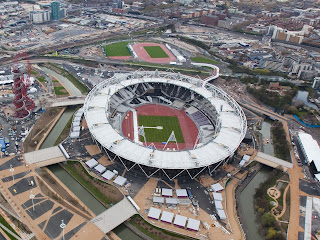 |
| The Olympic stadium |
The Olympic and Paralympic Games were a success. The organisation leading up to and during the games were highly acclaimed thanks to multiple ‘London Prepares’ events to test the organisers’ abilities, the opening and closing ceremonies were fantastic entertainment for the whole country, and the games themselves ran smoothly - with only a minor hiccup involving empty seats at events. But what about the legacy?
As well as the immediate benefits (such as tourism, facilities for aspiring athletes, etc.), the games in the Borough of Newham have had long term effects on the local area. Residents and businesses in Stratford now benefit from London Overground’s vastly improved East London Line. Additionally, the new Westfield Stratford City shopping centre led to jobs being created and means locals don’t need to travel all the way to Oxford Street for luxury brands. This is where the advantages mostly end though.
The negatives of hosting the games largely outweigh the positives. For one, before the games, businesses in the industrial area that the Olympic park was built on faced eviction and were forced to relocate which caused many businesses to suffer due to the high cost of office space in London. The Evening Standard’s Simon Jenkins wrote “The Stratford site ... lost 300 businesses and 14,000 jobs in its cluster of factories, warehouses and canal-side businesses."
 |
| The entrance to the Stratford Centre |
 |
| Westfield Stratford City shopping centre opened in 2011 |
Moreover, there was a promise of new housing following the Olympic games; 31% of which is supposed to be affordable housing. Lots of the construction work is still underway however experts say this 31% figure is extremely optimistic because of large amounts of attention the area is getting from private foreign investors.
Building the Olympic stadium allegedly cost the taxpayer around £537m and a further £272m to convert into a Premier League football stadium. West Ham, the football team who won the bid to play in the stadium, currently only pay rent of £2.5m per annum (with a £15m up-front fee) meaning they would need to be in the stadium for the next 318 years for the public money to be replenished. Some justify this ‘steal’ of a deal by looking at Greece’s Olympic stadium from 2004 which has been abandoned and is sat gathering dust.
As for the future of Stratford, experts predict large growth in the area with the creation of new office space and new housing. However, I suspect that growth is likely to go unnoticed by the current residents who are still suffering from the Olympic and Westfield developments. The mostly unused Queen Elizabeth Olympic Park (as it is now called) appears to be the consequence of incompetent legacy planning by the organisers of London 2012 and now it is the local working class people and small business owners who are paying the price.